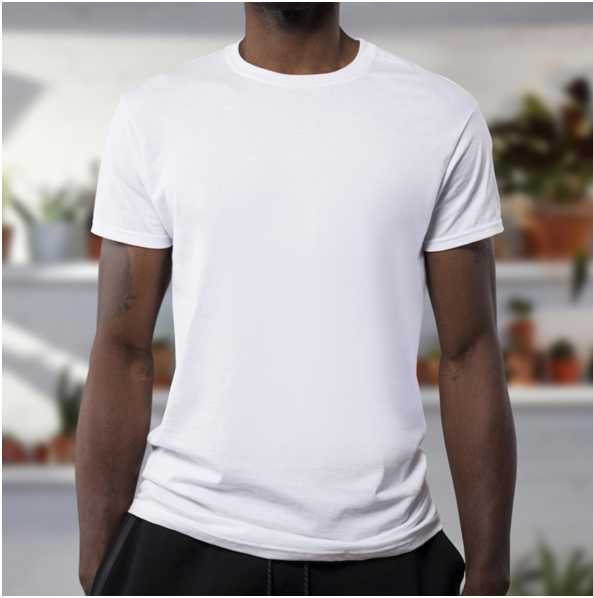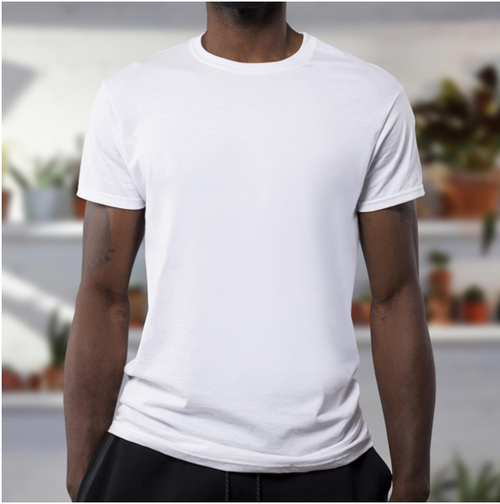Choosing Wholesale Blank T Shirts for Your Printing Method
Nov 4th 2019
Custom clothing has become a huge industry and there are plenty of options to choose from when it comes to customizing garments. If you are going to be customizing your own apparel, it's important to know which wholesale blank t shirts will work best for your chosen printing method. At Clothing Authority we deal with several individuals and businesses that use a wide range of printing methods and we can help you find the best garment for your preferred printing technique.
Screen printing is one of the most common garment printing methods. When screen printing, every color that will appear in the final design is isolated in a single silkscreen. These screens have been coated in an emulsion, with only the areas corresponding to each color in the final design remaining uncovered. Once the emulsion has hardened, ink can be passed through the open sections of the screens to place the desired colors in the correct positions.
As long as the screens are properly aligned and the ink is applied and dried between layers, the results will be vibrant and flexible. Extremely fine screens can be used to create detailed halftones, but photo-realistic images will be difficult to achieve without extremely high screen counts. The most screens used, the more expensive the final print will be.
Screen printing is an all-around great option for printing simple designs on virtually any of our wholesale blank t shirts. Whether you choose cotton, polyester, cotton-poly blends, or tri-blend garments, you can use the same screens to print them all. Ink should be applied in a thin layer and dried faster in order to avoid dye migration where the ink “bleaches” the other side of the fabric on polyester garments.
Another common form of garment customization is heat pressing vinyl. This method leaves a thicker print and is commonly used in custom t shirt stands and applying numbers and names to sports uniforms. Vinyl has a thick feel to it, and large designs will affect the bulk and breathability of the finished shirt. Cut vinyl designs will feature a single-colored vinyl that is cut, weeded of excess vinyl, and then is heat pressed to the garment. Vinyl can also be printed to create gorgeous full color and photorealistic designs that can be pressed in a similar manner.
Vinyl can be applied to any of our blank garments. The main factor when considering vinyl as your printing method is the design size. Vinyl does not breath well, so large designs will be stiff and hot to wear. For small prints like left chest designs, vinyl can be a quick and clean looking option. When applying vinyl to polyester and tri-blend fabrics, creases in the garment can cause the vinyl to bunch up and look sloppy. Over pressing vinyl onto polyester may also damage the garment, as they can be heat sensitive.

DTG, also known as direct to garment or digital to garment, is a form of printing that uses inkjet printing technology to print designs onto garments directly. Often these garments must be treated with a liquid pretreatment solution and dried to form a thin plastic-like layer before printing can take place. This pretreatment layer prevents the ink from sinking into the fibers as the shirt dries. There are also some printer brands that can print directly on wet pretreatment solutions, but these machines tend to be extremely expensive.
DTG is an amazing option for printing full-color designs onto cotton garments. The more polyester content to the garment, the more difficult it will be for DTG inks to remain above the fibers. DTG prints on polyester will often appear faded even fresh off the printer and they will continue to degrade over time. DTG on white and light-colored cotton can be printed with little or no pretreatment and will create vibrant photo-realistic images. Darker cotton colors will require a higher pretreatment level in order to achieve a high-quality image. The rigidity of the pretreatment will fade after washing the garment.
The final common printing method is known as dye sublimation or simply sublimation. Sublimation dye permeates the garment to change the color from the inside out. First, your design is printed in reverse onto special dye sublimation paper and it is then heat pressed onto the garment.
Dye sublimation can achieve gorgeous full-color images on polyester garments, but not cotton, essentially excelling where DTG fails. If you want to create digital quality prints on polyester or poly blended garments, sublimation will be able to get you the vibrant results you want. Dye sublimation can also be used to print on any polymer-coated surface, giving them a wide range of applications beyond garment printing.
So if you are looking to order wholesale blank t shirts to print your own designs on, it’s important to make sure you are ordering garments that will work with your printing method. If you have any questions about which shirt options will work best for you, feel free to reach out to our team at 888-929-5262!

